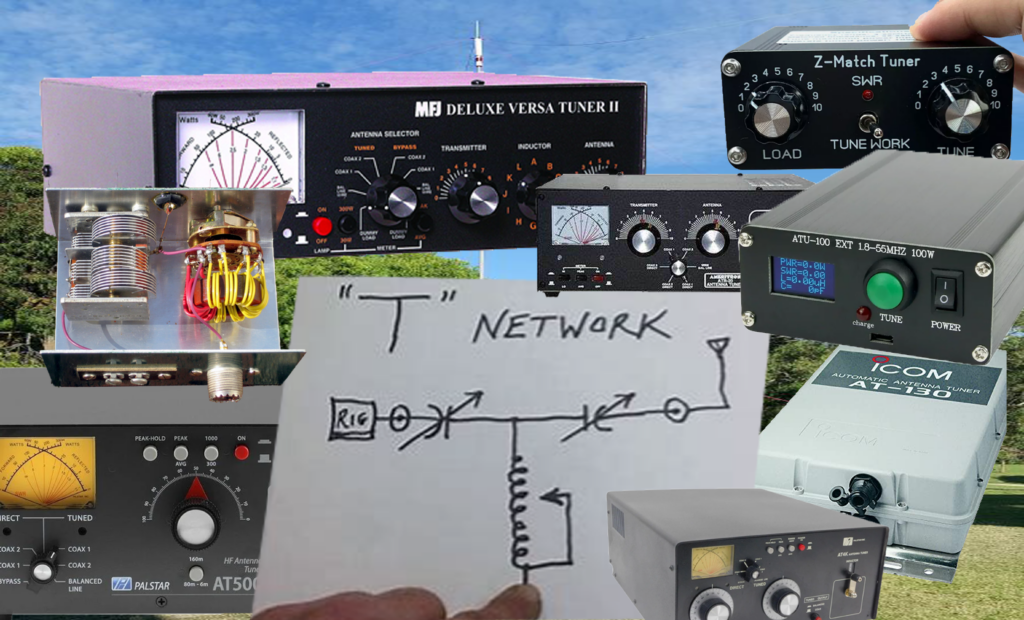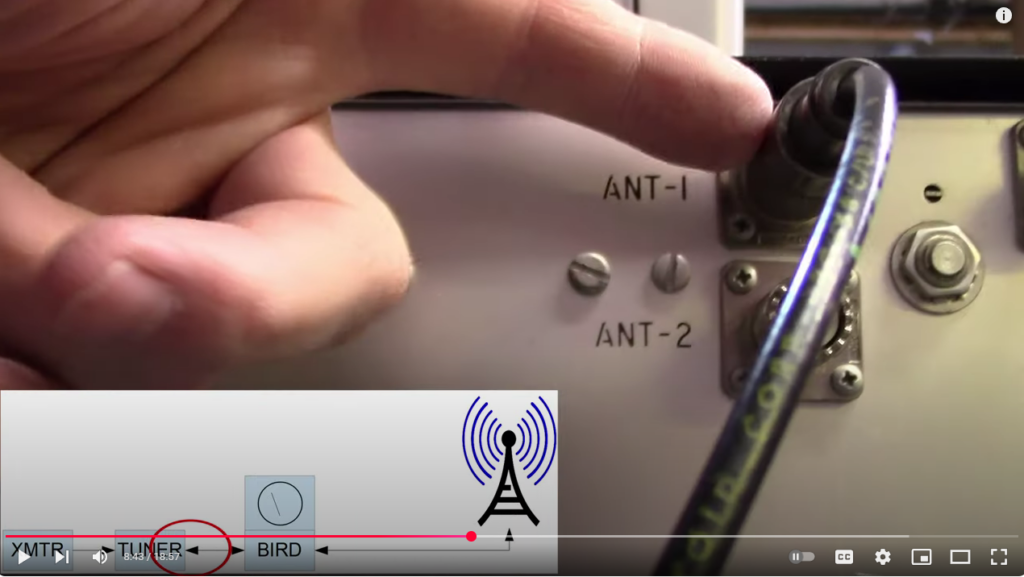
I have only been licensed for amateur radio since 2019. In that short time, I have lost count of how many times I have heard the claim that when you use an antenna tuner, you are only fooling yourself. For internal and desktop antenna tuners there are certainly cases where that is true. I have also heard at least one explanation using theory on why they are “useless.” Any explanations I have heard have consistently neglected the necessity for multiple reflections in the final tunred circuit.
The Purpose of the Antenna Tuner
The purpose of an antenna tuner is to counter an impedance mismatch by developing the complex conjugate impedance serving as a “mediator” between the transmitter and the antenna. The transmitter will then “see” a 50 Ohm impedance and experience no reflections. One could say that the antenna tuner is fooling the transmitter. But the story does not end there.
Everybody Knows:
The signal initially travels from the transmitter to the antenna tuner and nothing is reflected back to the transmitter because the impedances are matched. The signal then leaves the antenna tuner traveling down the feedline until it reaches the antenna. At the antenna there is a severe impedance mismatch and a portion of the signal enters the antenna for transmission and the remainder is reflected back to the antenna tuner. A portion of that reflection will then be consumed by the antenna tuner parasitics. But what happens to the rest of the energy?
What Are Multiple Reflections?
The remainder is REFLECTED BACK TO THE ANTENNA creating the first in a series of “multiple reflection” exchanges between the antenna tuner and the antenna.
I Have Found an Excellent Video
I have found an excellent video (shown below) where the author goes into extensive detail explaining the physics of reflections in easily understood terms and uses very nice animations. The author has several videos on amateur radio subject matter. I have found his presentations trustworthy.
The author (@eie_for_you, Ralph Gable) has an outstanding record, in my opinion, for producing excellent technical videos and tailoring them for those with only a rudimentary electronics knowledge. This particular video was exciting for me to find. He lays this thing out very, very nicely.
Pay Particular Attention
I have a couple of key elements for you to look for when you watch the video. He spends a lot of time discussing the nature of reflected waves regarding time-domain-reflectivity (commonly called TDR). Do not gloss over this section. If you can comprehend much of this, you will easily understand the rest of the video. Look for his explanation of what a reflection is all about and how it bounces back and forth many times between the antenna tuner output and the antenna. If you have the patience, I recommend that you play that part of the video several times.

One element of his example uses the junction of two coax cables, one a 50 Ohm and the other a 75 Ohm coax cable. This junction presents an impedance mismatch resulting in a special reflection that he discusses in detail. I like it!
Look also for the very special case that he develops for his example (illustration shown to the right). He has designed his example to work into an antenna that has a 6:1 SWR ratio. This is a special case that works very nicely in the demonstration.
